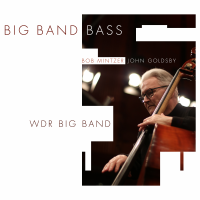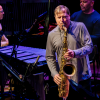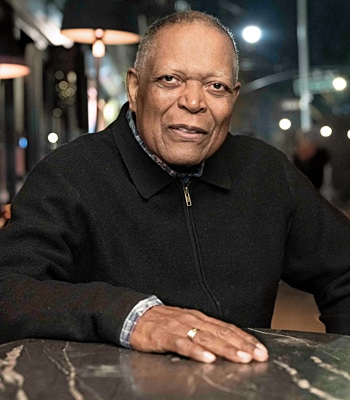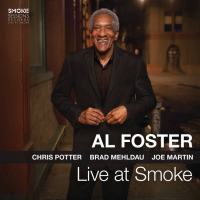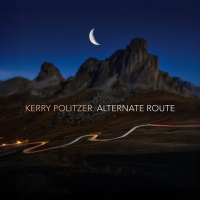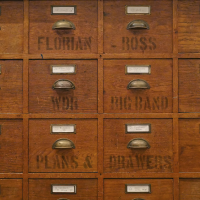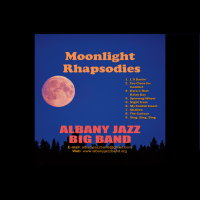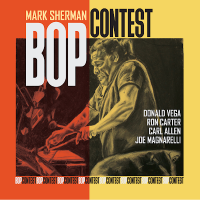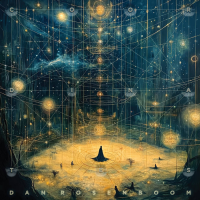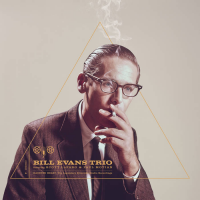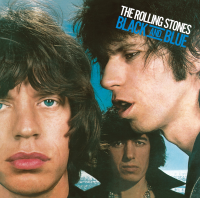Home » Jazz Articles » Album Review » WDR Big Band featuring John Goldsby and Bob Mintzer: Big Band Bass
WDR Big Band featuring John Goldsby and Bob Mintzer: Big Band Bass
The End Of A Musical Affair
But we were talking about a present, and this is none other than the release of Big Band Bass (Bass Lion, 2025), an album whose title alludes not to any included track, but rather to its very concept—the shared artistic gesture through which the Cologne-based artist and the WDR crown their enduring cooperation. The record is based almost entirely on pieces penned by the masterful bassist, who has been documenting his compositional talent in numerous realizations. These include albums under his leadership like Space for the Bass (Bass Lion, 2009) or Segment (Bass Lion, 2020), to collaborative projects with WDR members, like the intriguing "WDR Small Group Sessions," a series organized by the Louisville, Kentucky-born musician, where he displays his most chamber-like and experimental facet."I worked with the WDR Big Band for 30 years, and I feel like I put my stamp, my sound and my musical vision into the DNA of the band," Goldsby tells us, with well-deserved pride. An imprint in which many have found traces of illustrious innovators like Jimmy Blanton and Oscar Pettiford, but one where the influence of more recent groundbreakers like Scott LaFaro and Eddie Gomez—stripped of his gritty timbral epidermis—is also palpable. His is also the elastic definition of the late Peacock, or the mature depth of the venerable Red Mitchell.
"After three decades of working with the ensemble, I felt like it was time to step back and let a younger player take over the position, which would let the band grow in a different direction," states the low-end specialist. A decision that cannot have been easy. His long period with the phenomenal German formation has allowed him to share achievements and stages with an impressive cast of luminaries from the jazz galaxy, including Milt Jackson, Ray Brown, Phil Woods, Billy Hart, McCoy Tyner, Richie Beirach, Fred Hersch and Joe Lovano. At the same time, the context of a big band is perhaps not the best setting to showcase all the stylistic and creative nuances that an instrumentalist of his stature is capable of. "Now I have time for a lot of different projects, mostly in small groups," Goldsby affirms, thus confirming his yearning to delve deeper into that scene with tight-knit units he has been maintaining in parallel since joining the WDR.
A third key factor converges in the conception and realization of this recording. It is the presence of Bob Mintzer, chief conductor of the WDR since 2016, who arranges five of the eight numbers included in the album and participates as a saxophonist on one of them. Those familiar with his career path as arranger and conductor will find here virtually all of his stylistic constants: those solid harmonic layers, yet whose interactions articulate under a lubricated perfection; that dynamic swing, light yet substantial; that spine-tingling metronomic and tonal precision in the performances. And that pearlescent touch that sparkles even on the less festive entries. In keeping with his creative sources, references to the The Thad Jones-Mel Lewis Orchestra are unavoidable. Still, other less obvious polyphonic influences come to mind, such as those of Gerald Wilson and Toshiko Akiyoshi—in addition to Ellington's or Stan Kenton's, mentioned in the album's liner notes.
Preludes to a Suite
The disc draws, for the most part, from The Baden Baden Suite (Bass Lion, 2023), a previous realization from the bassist co-led by the WDR's current pianist, Billy Test, another American settled in German lands. Conceived during a stay in that city, known for its rich natural, historical and artistic heritage, the suite introduces six compositions born from Goldsby's pen. As always in these cases, comparing the original material with its orchestral treatment proves both interesting and revealing. The intimate bass-piano duo becomes a spectacular display of tonal, timbral and dynamic richness, yet the arrangements respect the harmonic and melodic framework of the early versions. However, the album begins with two tracks that do not belong to the aforementioned cycle."Sonatinita" raises the curtain with a brilliant dialogue between the double bass and a playful flute section—handled by the saxophonists—that could well have been signed by the aforementioned Akiyoshi. The piece, composed and arranged by Vince Mendoza, initially unfolds with gentle classical manners. Its title applies a diminutive—in Spanish—to the word 'sonatina,' which means, in itself, a small sonata. After a singular moment with clear references to Johann Sebastian Bach, the music drifts into 'Smooth Latin Jazz' territories, giving way to Ludwig Nuss' trombone spotlight—optimistic but tightly crafted—and a brief intervention by Goldsby, before the band brings it to a close. The track serves as a lightweight appetizer that contrasts especially with the urgent opening of the next tune, "In The Hills," first released on Off Broadway (Nagel Heyer, 2000), an album by guitarist Frank Vignola. After the abrupt start, the bassist dialogues with different sections of the ensemble, here already at full throttle, and Nuss kicks off radiantly the round of solos, followed by the leader, who shows his most LaFaro-esque angle. Next, the focus shifts to arrangements (this time by Dave Horler) in which the formation demonstrates its striking collective abilities, chiseling dramatic, sharp sound masses. In the final stretch, a short but evocative vamp stands out in which bass and trombone dialogue with eager impatience, before proceeding to a solemn finale.
Thermal Waters Run Deep
What follows is the exposition, practically in its entirety, of the spa town suite, all of it arranged by Mintzer. "Blue Balloon" is its introductory number, dominated by that catchy main motif stated by the piano, but where the signature traits of the New York-born musical director quickly become evident. The solos seem to follow a suggestive historical-stylistic sequence, with Johan Horlen's sax recalling the last Charlie Parker, Ruud Breuls' trumpet sliding sonorities à la Clifford Brown, and Paul Heller's tenor invoking the spirits of John Coltrane and Michael Brecker."Kléopatre's Secret" presents a broad spectrum of musical situations. These range from the preliminary balladic tones and dancing melody—sketched by Goldsby in unison with Jens Neufang's mellow bass clarinet, with delicious counterpoints from flutes and brass—to the sonic and thematic exaltation led by the band. There, the ensemble wields all its majestic potential. The sinuous theme, based on the gait of a famous cat resident in one of the city's wellness hotels, interweaves solo passages—or those executed by imaginative subsections—with the rest of the band. Test's piano, Bastian Stein's flügelhorn and Karolina Strassmayer's alto contribute elegance, creativity and evocation, respectively but not exclusively, before brass and reeds radiate a luminous end. "You Can Call Him Maestro" establishes a sensation of continuity, potentially seeming at first like a rhythmic acceleration of the end of the previous track, from which it maintains its harmonic vibe, but not its melodic freshness. Goldsby emerges to deliver a long and inspired discourse, succeeded by guest trombonist Jonathan Böbel , rendering a well-constructed and clearly articulated performance. Ben Fitzpatrick on tenor sax rounds off the soloing, bravely playing beyond the changes at certain points—this lends the suite's most crossover-oriented cut an almost imperceptible, yet welcome, exploratory touch.
The scenery changes drastically with "Dahlia Garden," whose starting moments are imbued with the unmistakable textures of Maria Schneider, only to quickly transform into a canonically classic ballad, led by Neufang (now on baritone sax), who seems to honor the memory of Pepper Adams. Sure, Ellington and Carney are part of it, but so are the memories of some of Adam's realizations with Mel Lewis and Thad Jones, like the devastating "All My Yesterdays." Neufang kidnaps our attention through his stellar presentation of the delicate melody, and Goldsby takes over and develops it through an excellent solo with some reminiscences of Charles Mingus. He is followed by a refined ending in which the baritone saxophonist, once again, threads emotive reflections. To mitigate the disarming atmosphere created, "The Baron's Dilemma" provides a bracing, energetic groove, seized upon by the saxophones of Fitzpatrick, Heller—in a most welcome cathartic state—and Mintzer to impart juicy individual discourses. This gives way to a bloodless sax battle in which the three soloists trade first eighths, then fours, with Heller encouraging his colleagues to break perhaps excessive formal propriety.
A Brazilian Coda
With the suite concluded, "Sergio" is charged with closing the album. It is a piece that has been revisited often, dedicated by Goldsby to a Brazilian tour guide and, consequently, endowed with a breezy, 'sambeiro' mood, established in the initial bars by drummer Hans Dekker. The theme features the sophisticated arrangements of Michael Abene—formerly the band's musical director—alongside various guests not regular with the orchestra. Goldsby and Neufang polishedly expose the melody, and after a striking crescendo passage capped by a conversational interlude, the bassist explores the highest register of his instrument with rhythmic vehemence, as if it were eager to fly. His stylized enthusiasm is balanced by the prudent support of Dekker and Xavi Torres's piano. Flutes, brass and the full collective are stealthily added, leaving one last space for Goldsby's closing remarks. The result is ethereal yet fully in keeping with its original version, released in Cologne (Fuzzy Music, 2005), and closes the album with exceptional finesse.This is a superb demonstration of contemporary big band mainstream, characterized, as is customary in the successful alliance between WDR and Mintzer, by impeccable craftsmanship and a tempered use of energy. Let no one expect to find here the suggestive impressionism that permeates previous small-format Goldsby works like Cologne, or those notable doses of experimentation that spur albums like The Innkeeper's Gun (Bass Lion, 2010) or the aforementioned small sessions with WDR members. Whether one finds satisfaction or disagreement with these approaches depends on individual tastes—reasoned or otherwise. What is less debatable is that one misses some fragment with the bassist deftly wielding his bow. But these are, after all, minor details. We are facing a splendid farewell, a beau geste both for its protagonists and for all those interested in the complicated survival of orchestral jazz, whatever its approach, in these times of liquid postmodernity. Repeated listens—always advisable but all the more so with an album featuring a large ensemble—will add multiple and unexpected dimensions to what initially might seem too uniform. Elaborate arrangements will materialize where we least anticipated them, hitherto unnoticed sonic tapestries will make themselves known, and a solo fragment will unleash all its concealed seductive power.
Track Listing
Sonatinita; In The Hills; Blue Ballon; Kléopatre’s Secret; You Can Call Him Maestro; Dahlia Garden; The Baron's Dilemma; Sergio.
Personnel
WDR Big Band
band / ensemble / orchestraJohn Goldsby
bassBob Mintzer
saxophoneJohan Horlen
saxophone, altoKarolina Strassmayer
saxophone, altoBen Fitzpatrick
saxophone, tenorPaul Heller
saxophone, tenorJens Neufang
saxophone, baritoneWim Both
trumpetRob Bruynen
trumpetAndy Haderer
trumpetRuud Breuls
trumpetLudwig Nuss
tromboneRaphael Klemm
tromboneAndy Hunter
tromboneMattis Cederberg
trombone, bassBilly Test
pianoHans Dekker
drumsPaul Shigihara
guitarAdditional Instrumentation
Bastian Stein: trumpet, flugelhorn; Xavi Torres: piano (track 8); Stefan Pfeifer-Galilea: alto sax (track 8); Jonathan Böbel: trombone (tracks 3-7); Phillip Hayduk: trombone (tracks 3-7).
Album information
Title: Big Band Bass | Year Released: 2025 | Record Label: Bass Lion
Tags
About WDR Big Band
Instrument: Band / ensemble / orchestra
PREVIOUS / NEXT
Support All About Jazz
 All About Jazz has been a pillar of jazz since 1995, championing it as an art form and, more importantly, supporting the musicians who make it. Our enduring commitment has made "AAJ" one of the most culturally important websites of its kind, read by hundreds of thousands of fans, musicians and industry figures every month.
All About Jazz has been a pillar of jazz since 1995, championing it as an art form and, more importantly, supporting the musicians who make it. Our enduring commitment has made "AAJ" one of the most culturally important websites of its kind, read by hundreds of thousands of fans, musicians and industry figures every month.


